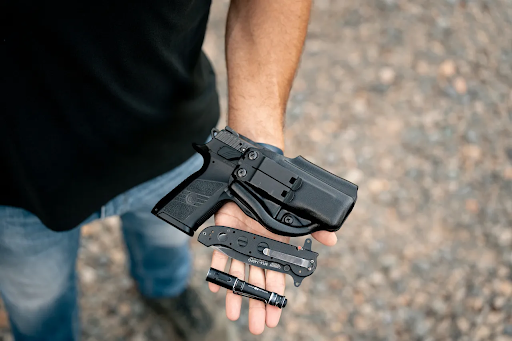When it comes to tactical training, every piece of gear serves a purpose. Among these, the firearm holster plays one of the most critical roles. It is not just a carrying accessory but a tool that directly influences speed, accuracy, safety, and overall performance during drills. For anyone serious about improving firearm skills, understanding the importance of holsters in training is essential.
Ensuring Safety and Readiness
The primary role of a holster is to keep the firearm secure while still allowing fast access. In training environments where live ammunition may be involved, safety is the top priority. A properly designed holster reduces the risk of accidental discharge and ensures the weapon is only drawn when intended.
Retention and Stability
Modern holsters come with various levels of retention. Some rely on friction, while others feature locking systems to keep the firearm in place. During tactical training, where movement is constant, retention ensures that the weapon remains secure, even under pressure.
Quick and Controlled Draw
In high-stress scenarios, seconds matter. Holsters are designed to balance retention with accessibility, allowing trainees to draw their firearms swiftly without fumbling. This aspect is crucial when practicing self-defense or law enforcement-style drills.
Improving Tactical Efficiency
Tactical training emphasizes realism and preparedness. The firearm holster contributes to both.
Consistent Placement
A holster provides consistent positioning for the firearm, which helps build muscle memory. Over time, trainees can develop a natural draw motion, reducing reaction times during simulations.
Supporting Different Training Environments
Whether it’s indoor simulations or outdoor field drills, holsters adapt to the environment. Options like hip, thigh, or shoulder holsters allow trainees to practice in conditions that mimic real-world scenarios.
Enhancing Confidence
Knowing that the weapon is secure yet accessible builds confidence. Trainees can focus more on situational awareness and tactical strategy rather than worrying about equipment failure.
Types of Holsters Used in Training
Different types of holsters are suited to specific training needs.
Belt Holsters
Belt holsters are the most common type, often used in everyday carry training. Positioned at the waist, they allow fast access while providing good concealment options.
Thigh or Drop-Leg Holsters
Popular in military and tactical settings, thigh holsters keep the firearm lower, making it easier to draw when wearing body armor or tactical gear.
Shoulder Holsters
Though less common in modern tactical drills, shoulder holsters still play a role in specific training programs, especially for individuals practicing concealed carry in professional or civilian contexts.
Appendix Carry Holsters
Appendix carry has gained popularity due to its discreet positioning. It requires careful training to ensure safety, but provides fast access in close-quarters situations.
Training Scenarios Where Holsters Are Essential
Holsters play a vital role across different types of tactical training.
Defensive Drills
During self-defense simulations, holsters ensure that trainees practice drawing and firing under pressure. This builds both confidence and practical skills.
Law Enforcement and Security Training
Police officers, security personnel, and military professionals rely on holsters daily. Training with the same holsters they will use in the field creates a seamless transition from practice to reality.
Competitive Shooting
Even in competitive shooting sports, holsters are mandatory for many events. They help shooters work on speed, precision, and weapon handling.
Choosing the Right Firearm Holster for Training
Not all holsters are created equal, and selecting the right one can make a major difference in training outcomes.
Fit and Comfort
A holster should match the firearm perfectly while also being comfortable for extended wear. Ill-fitting holsters can cause delays or even safety risks.
Material Quality
Leather, nylon, and polymer are common holster materials. The right choice depends on the training environment and personal preference.
Ambidextrous Options
For those who are left-handed or practice off-hand training, ambidextrous holsters are essential. They ensure that every trainee has the ability to draw smoothly, no matter their dominant hand.
Final Thoughts
In tactical training, the firearm holster is more than a convenience—it is a critical component that affects safety, performance, and preparedness. From retention and draw speed to comfort and adaptability, holsters directly shape how effectively a trainee can handle real-world situations. Choosing the right type for training not only boosts efficiency but also reinforces safe firearm practices. For those who train with a handgun for left-handed use, investing in the correct holster ensures equal readiness and skill development.
